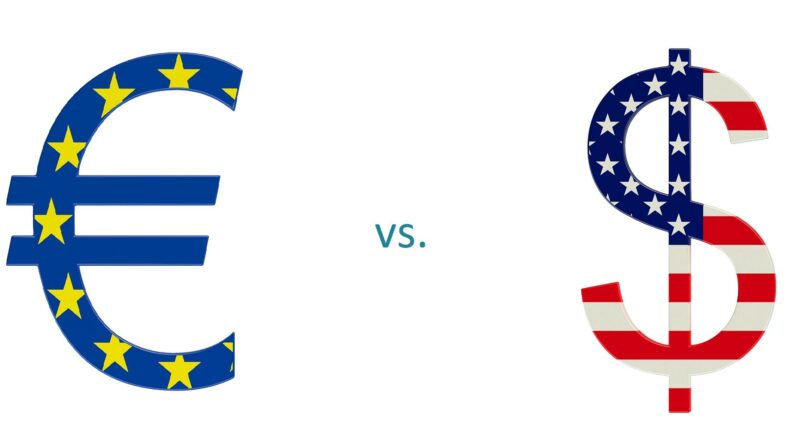U.S.-EU Trade Agreement Fuels Dollar’s Surge
Welcome to the live blog focused on the financial markets in Europe. The euro experienced a dip, falling 0.53% to the U.S. dollar, which was quoted at $1.167 during the early morning trades in London (4:15 a.m. ET). This fluctuation in the currency market was primarily due the U.S. dollar making striking advancements on the back of the new U.S.-EU trade agreement that was unveiled on Sunday.
This deal didn’t completely eliminate all periods of doubt for every industry area; however, the pivotal conditions such as a 15% tariff on exports from the European Union to the U.S., coupled with a pledge to increase expenditure on U.S. energy and other commodities, overall aligned with market anticipations. This positively influenced the risk mood on Monday, contributing to the rise of the greenback.
The U.S. dollar has long been viewed as a ‘safe haven’ during times of economic uncertainty or volatility, with investors seeking refuge in it. Yet, this general trend seems to be regularly contradicted this year due to significant market turmoil had its roots in shifting U.S. policies.
Market analysts discussed on Monday that in spite of the upbeat response to the trade arrangement between the U.S. and EU, currency traders are likely to now shift their focus towards the impending U.S. economic data schedule this week. The data includes job statistics, the GDP for the second quarter, and the Federal Reserve’s favored measure of inflation, the Personal Consumption Expenditures.
There was a drop on Monday in the European beer companies’ stocks reacting to Heineken’s first-half results, which exceeded expectations but also highlighted a weakening consumer sentiment in the U.S. and Europe. As a result, Heineken’s share dived 3.5%, with AB InBev and Carlsberg’s shares falling 0.8% by 8:43 a.m. London time (3:43 a.m. ET).
Due to forthcoming macroeconomic challenges that might negatively influence consumer spending, including an easing sentiment in Europe and the Americas, inflationary pressures, a weak U.S. dollar, and wider global political instabilities, Heineken predicts a potential impact. Despite these difficulties, the Dutch brewing company is sticking to its yearly projection of a 4% to 8% organic operating profit growth.
In other news, Forvia, a car parts supplier, saw a nearly 8% jump in their core profit for the first half of 2025 following hefty cost cuts. The company’s CFO reassured that the recent U.S.-EU trade deal won’t prompt any alterations to its year-end targets, even though the France-based firm recorded, sales totaling nearly 14 billion euros ($16.4 billion) in the first half.
Nevertheless, Forvia cautioned that it foresees the manufacturing landscape to remain erratic and uncertain, creating potential challenges.
Europe’s car manufacturing sector showed a marked positive reaction to the news of the secured U.S.-EU trade deal framework, causing shares in these industries to rise on Monday. U.S. President Donald Trump expressed his enthusiasm on Sunday about the benefits of the deal for the automotive industry, affirming the reduction of tariffs to 15% on EU goods imported into America.
European stocks experienced a surge, reaching their highest mark in the past four months, an effect of the freshly agreed U.S.-EU trade deal. The major indexes across the region also traded higher – the Stoxx Europe 600 index rose by 0.8%, the FTSE 100 of the United Kingdom increased by 0.3%, while in France, the CAC 40 marked a 1.1% higher and Germany’s DAX rose by 0.7%.
Trading rings also basked in the brewing industry’s success with Heineken eclipsing profit projections for the first half of the year, reporting an operating profit of just over 1.4 billion euros ($1.6 billion). In line with this, Heineken is affirming their annual prediction, expecting organic profit growth of 4-8%.
Automotive manufacturer Stellantis, luxury brands like Porsche and Mercedes-Benz Group as well as auto parts suppliers like French-based Valeo, all saw their shares climb by more than 2%, with Valeo ascending up by 5%.
Market indications suggest a strong start in the next trading session in light of the recent U.S. and EU agreement on trade. For instance, market futures tied to the Stoxx Europe 600 index are anticipating the index to commence 0.8% higher.
In other regional trading platforms, the forecasting trends also hint towards a bright start. For instance, Germany’s DAX is poised to advance 1% up; the French CAC 40 looks on course for a 0.4% gain, while signs from the UK suggest the FTSE 100 is set to rise by 0.5%.
In conclusion, the markets are brimming with optimism in the wake of the U.S.-EU trade agreement, with positive reactions sweeping across different industry sectors and influencing both currency and stock markets.



